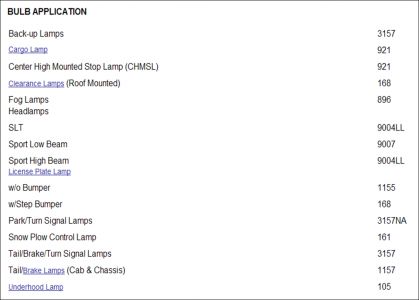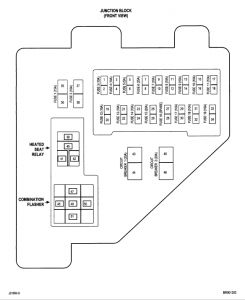Hello -
Glad you got an excellent deal on the truck. . .. . .. . .I am sure it looks great.
Well, I can tell you where the flasher is. . ...but I think it is doing like it is supposed to do. I have attached a special feature it does. Based off of that when you read it, you have a bad bulb on that side. You need to check to ensure the correct bulb is installed or you have a defective one. Compare the left to the right. Also, check all the bulbs on that side, front, back, side markers. Again, this is telling you there is a bulb out or defective in some way.
COMBINATION FLASHER
The combination flasher is located in the Junction Block (JB) behind the fuse access panel on the left outboard end of the instrument panel. The combination flasher is a smart relay that functions as both the turn signal system and the hazard warning system flasher. The combination flasher contains active electronic Integrated Circuitry (IC) elements. This flasher is designed to handle the current flow requirements of the factory-installed lighting. If supplemental lighting is added to the turn signal lamp circuits, such as when towing a trailer with lights, the combination flasher will automatically try to compensate to keep the flash rate the same.
The combination flasher has five blade-type terminals that connect it to the vehicle electrical system through five matching cavities in the receptacle of the JB. while the combination flasher has a International Standards Organization (ISO) -type relay terminal configuration or footprint, the internal circuitry is much different. The combination flasher does not use standard ISO-relay inputs or provide ISO-relay type outputs or functions. The combination flasher should never be substituted for an ISO-relay or replaced with an ISO-relay, or else component and vehicle damage may occur.
The combination flasher cannot be repaired or adjusted and, if faulty or damaged, it must be replaced.
A special design feature of the combination flasher allows it to "sense" that a turn signal circuit or bulb is not operating, and provide the driver an indication of the condition by flashing the remaining bulbs in the affected circuit at a higher rate (120 flashes-per-minute or higher). Conventional flashers either continue flashing at their typical rate (heavy-duty type), or discontinue flashing the affected circuit entirely (standard-duty type). During turn signal operation, the combination flasher IC compares normal battery voltage input on pin 2 with the shunt resistor voltage input on pin 7. If the IC "senses" that the voltage difference between pin 2 and pin 7 is different than the pre-calibrated value of the IC, it will increase the rate at which it signals the PNP transistor to energize the pin 1 output. Thus, the inoperative half (left or right side) of the turn signal circuit will flash faster.

The combination flasher is located in the Junction Block (JB) behind the fuse access panel on the left outboard end of the instrument panel.

SPONSORED LINKS
Friday, November 21st, 2008 AT 10:40 AM

